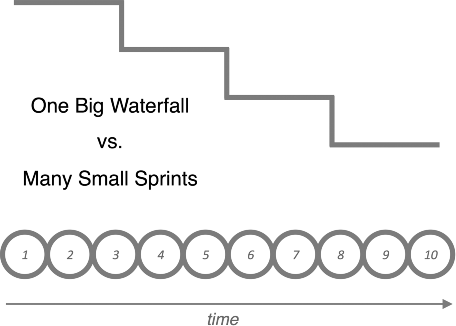10Increasing Marketing's Management Metabolism
Reflecting on the previous chapter, you may be wondering, “Isn't a sprint really just a miniature waterfall?” They both start with some planning, then execute on that plan, and then review what happened. If you shrank a waterfall, and connected its end back to its beginning, making a circle instead of a staircase, wouldn't they kind of look the same?
The primary difference would seem to be scale. Waterfalls are big. Sprints are small. But is such miniaturization really significant enough to revolutionize an organization's agility?
Yes. Powerfully so.
There's more to agility than just that, of course, but accelerating the cycle speed on which marketing management operates is the foundation of becoming more agile.
Part of this agility is achieved through the size limitations small sprints impose. This forces marketing to work—and think—in a more incremental and iterative fashion. And part of it is achieved through the increase in frequency. Many more sprints can be completed in the same period as a single waterfall, as shown in Figure 10.1. For example, a dozen two-week sprints could replace a six-month waterfall-style campaign.

Figure 10.1 Within the Time Frame of One Big Waterfall, Many Agile Sprints Can Be Run
Frequency matters because the smallest meaningful unit by which marketing plans what it is doing—as a management activity—sets ...
Get Hacking Marketing now with the O’Reilly learning platform.
O’Reilly members experience books, live events, courses curated by job role, and more from O’Reilly and nearly 200 top publishers.

